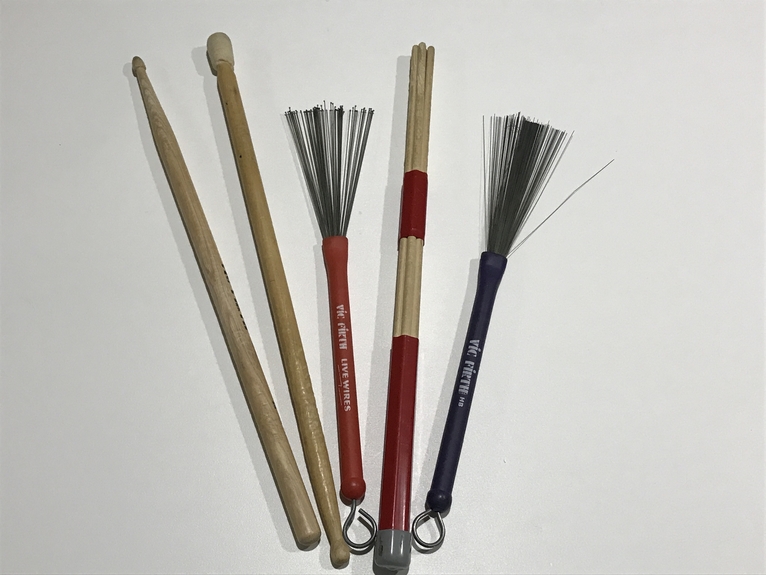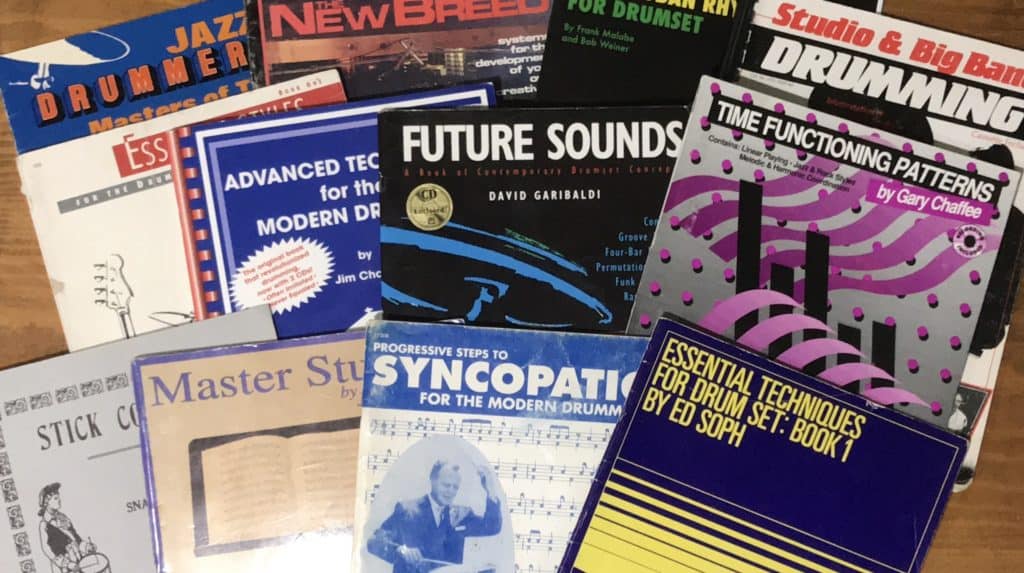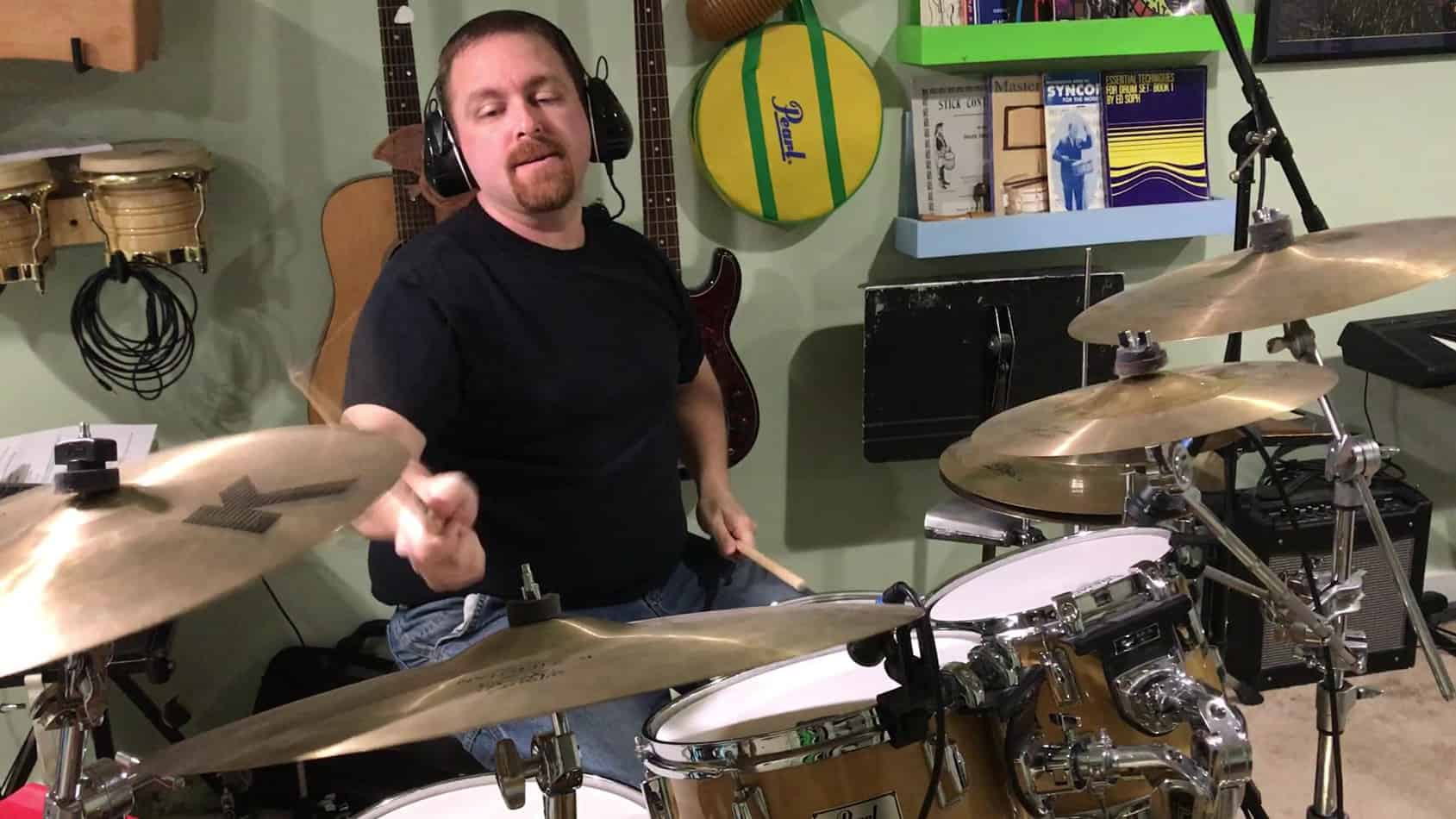Learning how to play drums can be an exciting experience. It can also be overwhelming at times because of the amount of effort it takes to get good at it. That’s why it’s important for beginners to learn how to learn drums as individuals developing technique and musicality on this instrument.
Learning to drum is one thing. But learning how to learn drums is a process of acquiring knowledge and skills that can guide your development for a lifetime. Beginners need to know the basics of the instrument, effective techniques, routines for development, and ideas about playing musically on the drum set.
The following list includes tips that I’ve picked up from several teachers, mentors, and years of playing professionally. These are the non-negotiables. Without these tips for how to learn drums, beginners risk lack of focus, which can lead to less improvement over time.
1. Drums
The drum set itself is a fascinating combination of percussion instruments. Although cymbals and drums comprise the basics of a setup, many drummers add a variety of sounds to their kit. But your drum kit doesn’t determine your success on the instrument.
Related: Drum Kit Setup – 10 Steps You Don’t Want to Miss
How Many Drums is Enough?
Regardless of the quality of your drums or how many you have, the fundamentals don’t require much. A kick, snare, and hi-hat will go a long way in practice and on the stage. Better drums are only necessary to achieve the highest sound quality, the difference of which is only recognizable to trained or gifted listeners.
Drum Maintenance
Drum maintenance is the key to good sounding drums. The drum heads are most critical, and the ability to tune a drum well is equally important. But it’s also important to take care of the hardware and drum shells.

Related: How to Tune Drums Like a Pro
When is it time to get a better drum set?
Go to a drum shop. Play some quality drums and listen for the difference. Maybe the better drums resonate more than yours or perhaps you’re inspired to get more sounds from the drums. These are both good reasons to get a better drum set.
Related: Best Drum Set for Beginners Under $1000
2. Sticks
Drumsticks come in different shapes and sizes. Each size and the shape of the tipc can be better for different applications. For example, a heavier stick with a round tip is better for playing snare drum. On the other hand, a lighter stick with an acorn-shaped tip can sound better for cymbals.

Some drum set players prefer a lighter stick, like a Vic Firth 5A. The weight of the stick can impact your ability to move it faster and take more energy to follow through with each stroke. Lighter sticks are often thinner which can be more comfortable for some players.
We all have different hands and choose different approaches to drumming. Although I studied jazz in college, I prefer a Vic Firth 5B because I come from a rudimentary drumming background and played a lot of rock gigs. The heavier stick has been hard on my hands and arms over the years, but that means I’ve had to be that much more disciplined in warm ups and developing my hands.
Regardless of your personal preference, stick selection from the store rack is a skill in itself. Look for consistent weights, pitches, and wood grain. You can tap the stick gently next to your ear to hear the pitch. This will help you ensure that the pair are really the same.
This issue with pairing your sticks may not seem like a big deal for beginners. But as you practice on a pad and develop an effective grip, you’ll hear and feel unbalanced sticks. This can be a distraction to progress and making music, which is not desirable, of course.
3. Notation for Drum Set
Much like reading books and websites gives us access to information, learning to read musical notation is crucial for how to learn drums. You can learn through oral communication, but it’s a lot less efficient.
Notation Basics for Drum Set
Notes are written on the staff — the five horizontal lines broken up by vertical bar lines. Each line and space in between the lines correlate to an instrument, like a drum or a cymbal, and the bar lines mark the measures.
A measure is one unit of the count cycle. For example, if the time signature is 4/4, then there are 4 counts in the measure and the quarter note is considered a count or beat.

If the terminology is too foreign, don’t worry about it. It’s like paint by numbers and counting cycles. If you can count to 4 and do simple fractions, reading music for the drum set is easy. The fancy language will make more sense after you learn how to count rhythms.
Rhythmic Note Values
A whole note is worth four beats (or counts). Since 4/4 is the most common time signature, it’s used as the standard unit for the note value nomenclature. We also call 4/4 common time for this reason.
Likewise, the quarter note is one fourth of the whole measure. This means you can include four quarter notes in a measure. Not to be confusing, but if the time signature is 3/4, then each measure has three quarter notes.

Counting Rhythms
The rule is simple. If you can’t count it, you can’t play it. To develop this skill, practice counting rhythmic phrases with a metronome.
Quarter notes are counted 1, 2, 3, 4; eighth notes are counted 1&, 2&, 3&, 4&; and sixteenth notes are counted 1e&a, 2e&a, 3e&a, 4e&a. If a rhythm includes an eighth note and two sixteenth notes, it’s counted 1&a.

As long as you maintain the note value for each rhythm, you shouldn’t have trouble counting and playing rhythms accurately.
Related: How to Read Drum Music – From Notes to Charts
4. Practice Pad
It’s not as cool as playing the kit, but the practice pad is how drummers become savages. This is the place where you do the hard work of developing technique and chops. It’s where you can really relax into the drum sticks being an extension of your body.
Buying a practice pad is not enough, of course. You need to play the right exercises and play them well. This means gripping the stick properly and using proper stroke technique.

Most of your practice pad time should be focused on mastering the two fundamental strokes — rebound and controlled. The rebound stroke is anytime the stick is allowed to bounce off the surface and return to the prep stroke position. Controlled strokes are simply the result of stopping the stick from bouncing off the playing surface.
Every drum rudiment can be broken down into different combinations of these two strokes. For example, paradiddles with accents on the downbeats are a controlled stroke followed by three rebound strokes. The controlled stroke is a higher stick height because it’s the accent.
Try the following exercise for practicing rebound and controlled strokes. These exercises are a good time to focus on consistency of sound as well as relaxation. If you feel like you’re in a meditative state, you’re probably doing some right.


Related: How to Practice Drums If You Want to Be Great
5. Coordination for Learning Drums
Hand and foot coordination is where we all start learning drums. Lining up the beat counts and the hand or foot we use to play different instruments on the drum set is fundamental. You will eventually become fluent with this coordination and your musical ideas will be realized without thinking much about coordinating your limbs.
The feet are usually the hardest to get in line, so let’s start there. Practice playing the kick drum everywhere in the measure possible. This means playing exercises like the ones shown below. Treat them like calisthenics for drum set.

The same approach should be considered for all of your other limbs. Focus on playing a basic drum beat to form the foundation for exploring each hand and foot through all of the rhythmic possibilities.
6. Groove is Everything
A drum beat consists of rhythms and instrumental choices. The groove are these things plus the feel established by the way you play the rhythms — how close each rhythm is to the next.
Grooves can be tight or loose, fast or slow, in front or behind, and several combinations of all of these variables. But don’t worry much about that in the beginning. Play everything in time with the metronome and your ability to lay back or get on top of the beat will develop naturally.
Focus on the rhythms, and from the rhythms you will develop styles. It’s important to know a variety of styles on the drum set because it will prepare you for a number of musical situations. Plus, learning different rhythms expands your vocabulary on the instrument, enabling you to come up with your own rhythms.
7. Drum Fills
Drum fills are fun, but they can be overdone. A lot of beginners have a tendency to play the beat to get to the fill. This is a mistake.
Play drum fills for a specific reason. The reason can be fun, of course, but make sure the reason for the fill is clear. For example, the drum fill may mark the end of a musical phrase. Other reasons for drum fills include setting up ensemble hits or you could play a short or extended drum solo at the end of an instrumental section of the song.
Listen to the variety of fills that drummers play on your favorite songs. Try to play those fills and consider why those drummers chose to play such a fill. Is the drum fill one beat long or is it a whole measure? Does the drum fill maintain the groove?
Related: How to PLay the Best Drum Fills
8. Method Books to Learn Drums
Good books will take you anywhere you want to go, and they are a great place to learn drums. Some books are good for learning to read and coordinate your limbs, while others are better for learning drumming and rhythmic styles.

Start simple with a book like Syncopation by Ted Reed. This book has reading exercises that are designed to allow you to develop coordination and musicality on the drum set. It’s the kind of book that does more for you than what’s on the page.
If you want to learn different drumming styles, Essential Styles by Steve Houghton is an excellent choice. It has two volumes and comes with a play along. It’s also a book for bass players, so it honors the close relationship drummers and bassists have in the rhythm section.
Related: 11 Method Books Every Drummer Should Own
9. Favorite Drummers
Favorite drummers are usually how we get into playing the drum set. But there are a few things to consider when following and studying your heroes.
Avoid only having one favorite drummer. This gets into the problem of ranking musicians, which is one of the worst things anyone can do. Embrace your favorites for who they are on and off stage, but let’s not act like there aren’t any other great drummers.
If you find yourself locked onto a specific drummer for a while, take a break. Find a new favorite drummer from perhaps a different genre. I was really into John Bonham when I started playing drums. Then, I heard Chad Sexton of 311 and Carter Beauford of Dave Matthews Band, and I realized that several favorites can broaden your influences.
10. Drum Every Day
Drum every day you can. You should even drum multiple times a day. This is not possible for everyone because life happens, but it’s the daily activity that turns beginners into intermediate players.
Even if you have 15 minutes a day to drum on a pad or behind your kit, it’s totally worth it. Drumming everyday helps to build pathways in your brain that prioritize the functions that it takes to improve.
I know that more practice helps, but practice more often, no matter how long, helps big time!
Final Thoughts
Drumming is a gift. The opportunity to play drums and access the greatest players ever to record audio or video has never been as great as it is today.
Embrace it and have lots of fun.


